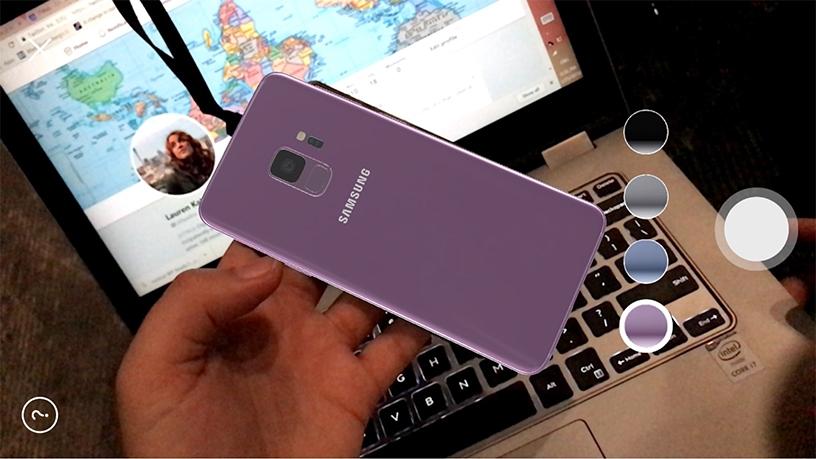
Thousands of people traipsed through the halls of the Fira Gran Via in Barcelona last week for Mobile World Congress (MWC).
They wanted to see electronic manufacturers' latest offerings in the mobile space and what other tech companies were doing to make sure these objects stay connected now, and into the future.
Michael O Hara, chief marketing officer of the GSMA, the organisers of the show say this year, more than 107 000 visitors from 205 countries and territories attended the 2018 MWC event.
He says over 55% of this year's MWC attendees held senior-level positions, including more than 7 700 CEOs. More than 2 400 companies, up 100 from last year, showcased products and services.
"The overarching theme of this year's congress was 'Creating a Better Future', a theme which reflects the impact of mobile on the lives of more than five billion people around the world, fuelling innovation, revolutionising industries and spurring exciting new opportunities, across developed and developing markets," says O Hara.
Large electronics conglomerates usually use this chance, when all the tech media of the world is in one town, to launch their latest flagship devices. This year, there seemed to be fewer companies taking advantage of this opportunity: Nokia, Sony, Samsung and Asus. Last year there was Huawei, LG, BlackBerry, Sony, Nokia and Motorola, to name a few.
For the companies that did unveil premium smartphones, the focus was largely on what was on the inside, what the device could do, rather than on the hardware. There were three main standout features companies emphasised: augmented reality (AR), artificial intelligence (AI) and the 'intelligence of things'.
"Many device-makers use MWC as a platform for new launches. It is true, however, that AI and AR were both very prominent themes at the show, across the exhibition and the conference," says O Hara.
Pulling faces
There was no mention during the Samsung S9 launch of the size of the device's battery, the screen resolution, or even how many megapixels the new dual camera set-up sported.
Instead, Samsung emphasised the AR capabilities of the device. All attendees had to download an app to get into the venue, and then were urged to make sure it was updated before the show began.
During the show, attendees were asked to open their apps and point them at their name tags and the tag was "transformed" into the new device. When looking through the phone, it seemed as if you were holding a new lilac S9+.
The other AR feature stressed was a camera option that allows users to create an animated emoji of themselves.
Arthur Goldstuck, MD of World Wide Worx, pointed out that Samsung's focus on platform over hardware at its phone launch "presages the 5G future, when connectivity will be a common killer feature that makes devices themselves less relevant than the context on which they function.
"For a technology that didn't even have standardised specs three months ago, 5G loomed surprisingly large over MWC, more so than even the mobile phones that are the heart of the event.
"It highlighted the fact that MWC this year was more about platforms than devices."
Learn as you use
This year, Asus launched an iPhone X lookalike, the ZenFone 5, and focused on the on-device AI which learns scenes in photographs and the user's preferences, and over time will automatically apply the most appropriate filter and settings to the photo.
While LG did not release a new flagship this year, it did unveil an upgraded version of its LG V30, the V30S, with a host of AI features focused on image and voice recognition.
The company introduced Vision AI, which automatically analyses objects and recommends the best shooting mode before the picture is taken. LG says it collaborated with a partner in image recognition to analyse over 100 million images in order to develop the phone's image recognition algorithms.
LG's new Voice AI, in collaboration with Google Assistant, will allow users to run apps and change settings through voice commands alone.
LG says it will continue to add more AI features to its devices.
"As we communicated last month at CES, the future for LG lies in AI, not just hardware specs and processing speeds," says Ha Jeung-uk, senior VP and business unit leader for LG Mobile. "Creating smarter smartphones will be our focus going forward."
Brains matter
The 'intelligence of things', not to be confused with the 'Internet of things' or IOT, refers to how devices in the IOT system (sensors, smartphones, computers, actuators, smart watches, software, etc) collect information, share it with each other and take actions based on that info.
Goldstuck says: "Even the Samsung Galaxy S9 and S9+, arguably the stars of the show, almost played second fiddle to the Internet of things and 'intelligence of things' ecosystem that is emerging around Samsung devices and appliances.
"In a seamlessly connected device environment, the specs of individual devices become less important, and Samsung seems to be pre-empting this trend without saying as much."
Regarding next year, the O Hara says: "It's hard to predict exactly what will be the major focus for Mobile World Congress 2019, but we'd expect to see some topics from 2018 extend into 2019, including 5G as the very first commercial deployments get under way; and AI as that becomes more engrained in our everyday lives as consumers, and gains further traction across a number of industry sectors (automotive, manufacturing, etc).
"We will also see continued discussion of 'intelligent connectivity', which marries hyper-connectivity enabled by 5G with the intelligence delivered through AI."
Share